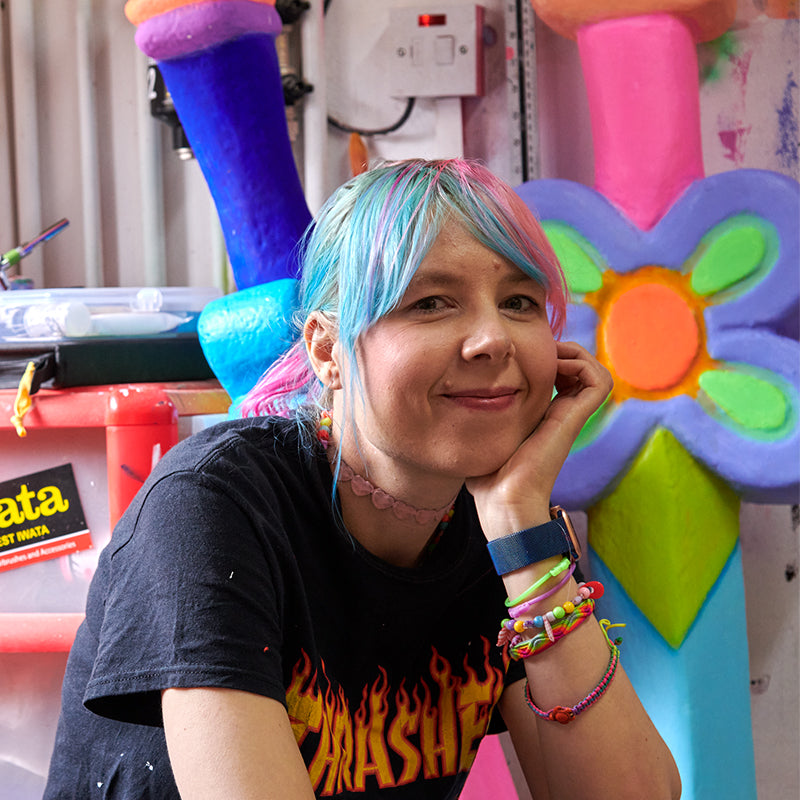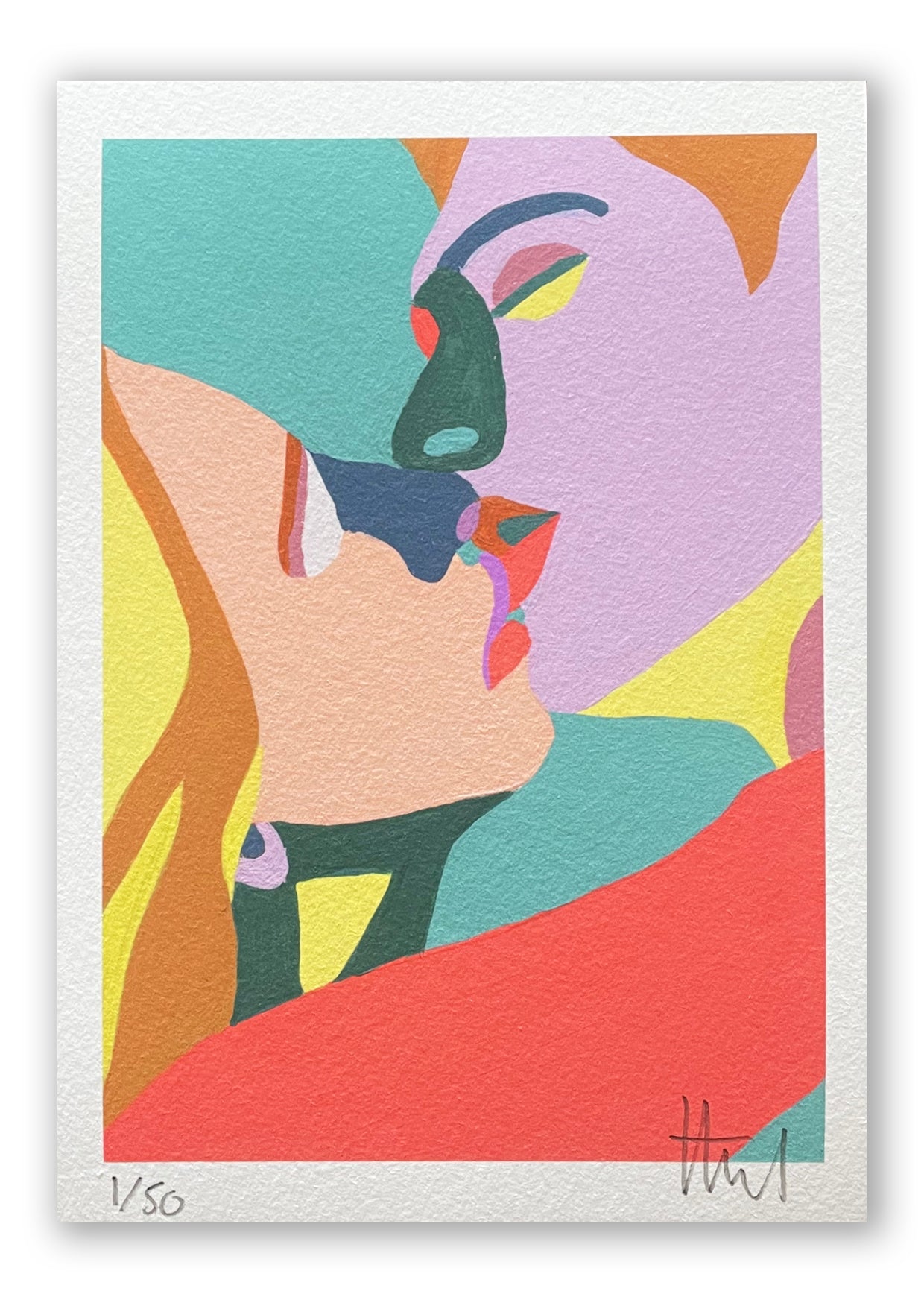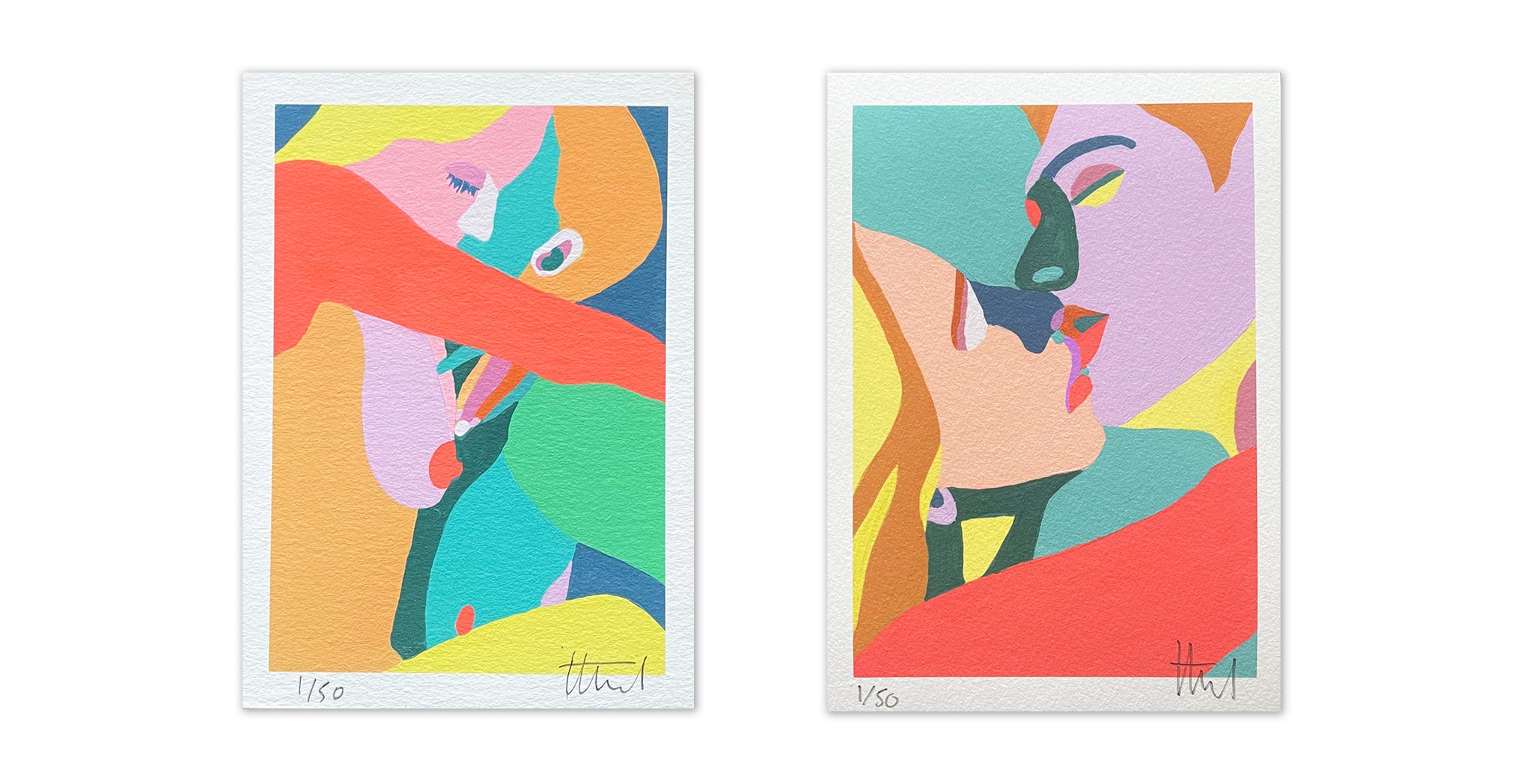Rannva Kunoy (Born 1975, Faroe Islands) is a painter currently living and working in London. Rannva graduated from the Royal College of Arts in 1999 with a degree in Fine Art Painting, and has been practicing since. She is mostly known for her impressive abstract works, in which she experiments with the concepts of colour, spatiality and immateriality. Rannva generally works on a larger scale; swathing her canvases with layers of colour-shifting crystal enamel paint – the kind predominantly used on luxury cars – to construct fluid, entrancing scenes. We are delighted that Rannva is participating in Art on a Postcard’s 2018 Secret Auction!
Rannva’s concern with the “immaterial” drives her artistic practice. Her works explore this concept by constantly pushing for communication and interpretation, whilst outwardly complying with the conventions of abstraction. Rannva allows a viewer the power to interpret her pieces without too much contextual or narrative guidance. Other than the titles she gives her pieces (they are often named after real-world concepts and nouns, and frequently evoke the political), Rannva’s choice in medium is what propels the context of her work. In some pieces, she applies planes of pearlescent car paint to the canvas. The pigment contains ceramic crystals that refract light, and produces a wonderful shifting colour effect, meaning the work is ever-changing depending on the perspective.

Rannva Kunoy, Gerrymandering (2017)
These mesmerising backdrops often play host to scratch-like markings on the surface of the canvas. Initially, there is a strong contrast between these graphic markings and the iridescent base layer, but eventually the markings, too, seem to shift and change. This feature of Rannva’s practice is reminiscent of work produced in the process of “automatism”, popularised by the surrealists in the 1920s. The aim of automatism, that is to create art without conscious thought, drawing from the content of the unconscious mind, is echoed in both Rannva’s artistic aspiration – to move away from overwhelming texture and figuration; to achieve the “immaterial” through an inherently material, tactile practice – and on the canvases themselves, with their seemingly random, yet certainly evocative, patterns.

Rannva Kunoy, Vice Admiral (2017)
Rannva’s work seeks to question the nature of spatiality – and this practice is, again, indebted to her unconventional choice of media. Her work possesses a kaleidoscopic quality which creates the illusion of depth, whilst the esoteric markings appear like fissures; breaking up the fluidity of the background. These large-scale pieces can occupy the space of a whole wall, acting almost like a centre of gravity. Yet Kunoy’s artistic exploration of space probes further than the physical realm; the paintings possess a self-awareness concerning their space in the scope of contemporary art. Rannva cites Lucio Fontana, the founder of Spatialism, as an influence on her work. Fontana’s famed cut paintings, his “spatial concepts” interpret the canvas as a sculptural object, rather than simply a vessel for the pictorial, and Rannva’s canvases work in a similar fashion. They interact not only with a viewer but with the spaces in which they are displayed, capitalising on external factors such as the light source to provide fluctuating perspectives. In a sense, the canvas transcends the boundary of artwork/viewer, and instead becomes part of the space.

Lucio Fontana, Spatial Concept: “Waiting” (1960)
Rannva’s astute sensitivity to colour and space, as well as her introspective motives make for paintings that are as beautiful as they are hypnotic, and a delight to view. Rannva will be taking part in the 2018 Secret Auction on March 25th at the Other Art Fair, so try and spot her postcard!
About the writer
 |
Holly Cheeseman - 'I’m a 21-year-old student, currently in my last year of a BA in Comparative Literature at King’s College, London. When not working on my dissertation, I run the KCL Art Society, hosting weekly practical sessions and exhibition tours. I spend the majority of my spare time attempting to work on one of the many half-finished drawings or paintings littering my flat.' |


















